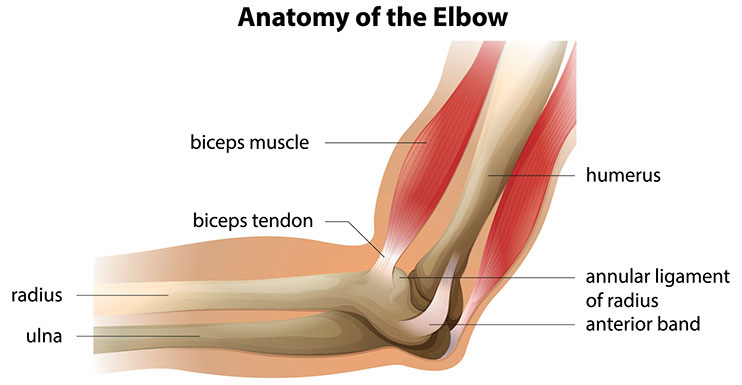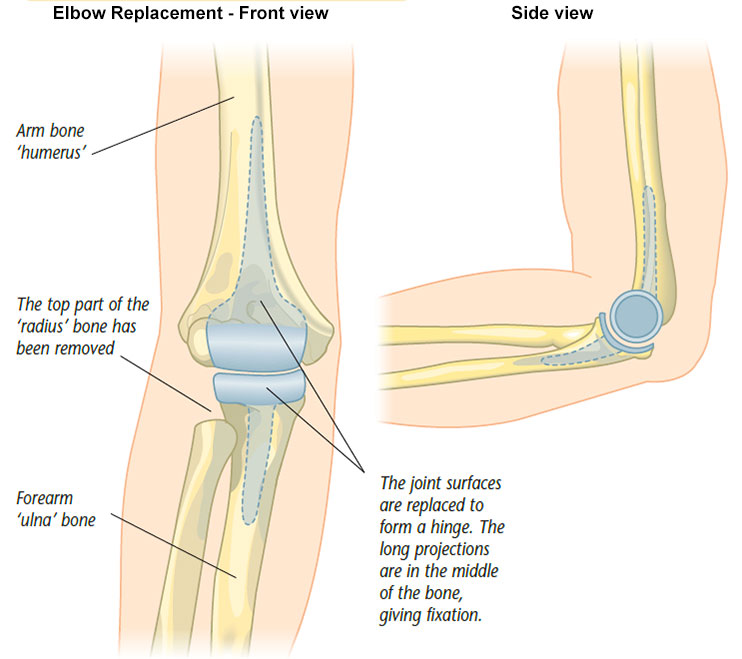

The elbow consists of the upper arm bone (‘humerus’) and two bones in the forearm (‘ulna’ and ‘radius’). See image below.

The elbow works in two parts. One part acts as a hinge enabling you to bend and straighten the elbow. The second part provides rotation or pivoting of your forearm; for example to put your palm up towards the ceiling to receive ‘change’ in a shop. The joint has muscles which move it and also some nerves that pass close by (hitting your ‘funny bone’ gives a nerve sensation into the forearm and/or fingers).
The most common reason for replacing the elbow joint is for arthritis, usually rheumatoid arthritis. However it may be necessary with osteo-arthritis (wear and tear) and following a fracture or bad accident.
The operation replaces the damaged joint surfaces. There are many different types of elbow replacement. They usually consist of metal and plastic. The surfaces are replaced to give a hinge joint. In addition the top of one of the forearm bones (radius) is removed as this joint can also give elbow pain. See image below.

To get into the joint, the muscle on the back of your arm (triceps) is split and cut away from the bone. This is then re-stitched at the end of the operation.
The main reason for doing the operation is to reduce the pain in your elbow. Ultimately you may also have more movement in your elbow. Bending your elbow to allow your hand to reach your mouth and rotating the forearm usually show the greatest improvement. However, it is quite common to have some limitation in the extent you can straighten your elbow after surgery.
The exercises you will do will aid the recovery of the soft tissues. You are more likely to get a good result if you work hard at your exercises.